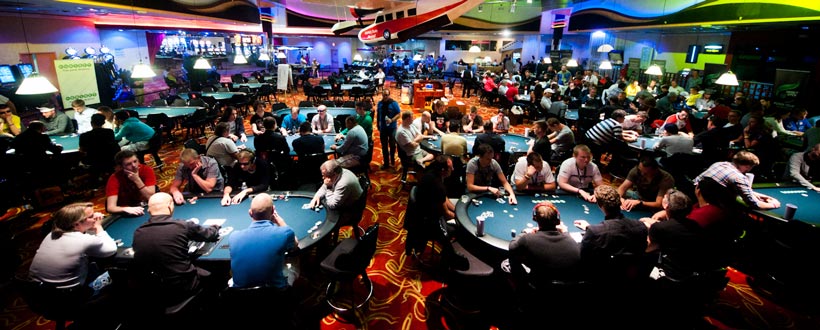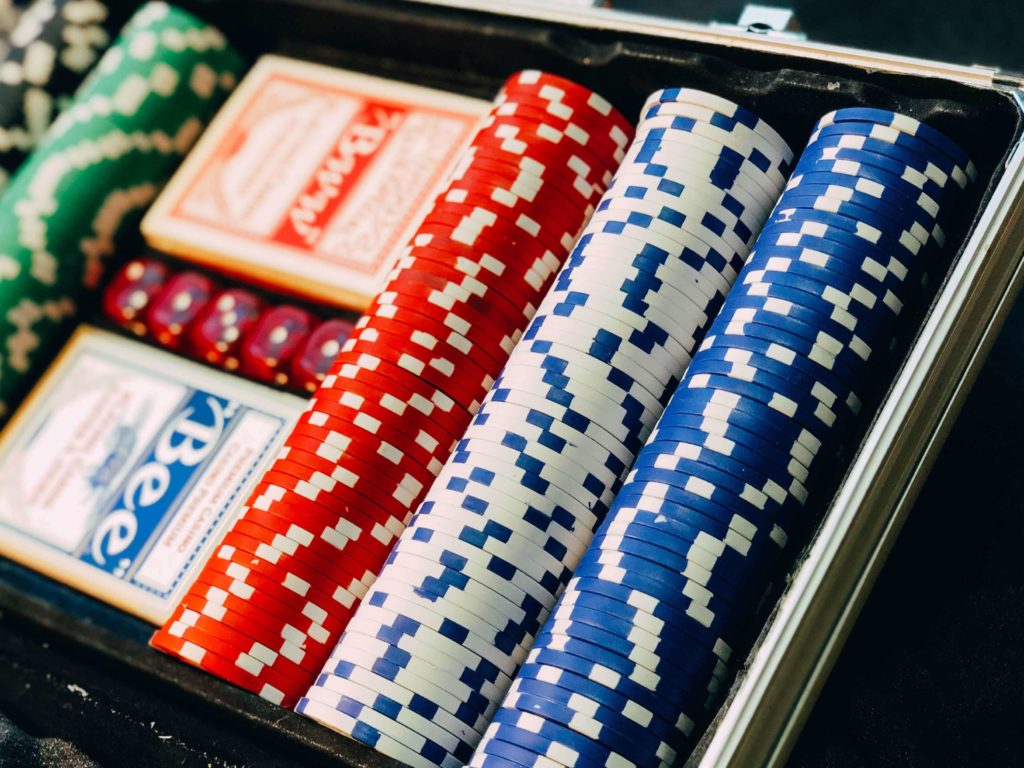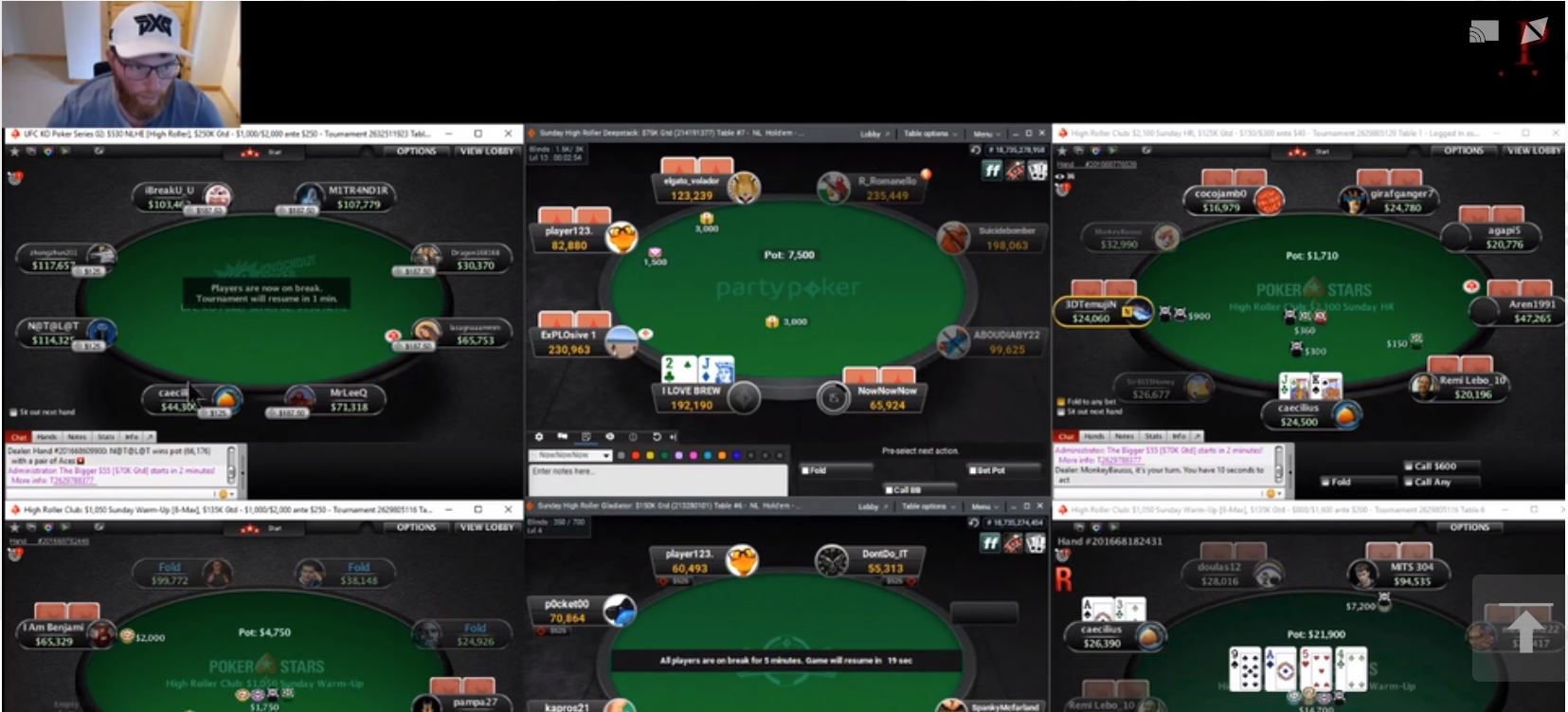Late Stage Poker Tournament Strategy
Joseph Hebert won the ‘Domestic Tournament’ of the 2020 World Series of Poker $10,000 buy-in no-limit hold’em main event Monday evening in Las Vegas.
How to Play Beginning, Middle, and Late Stages. They say everything has a beginning, a middle,.
- A Sit and Go an on-demand poker tournament that begins as soon as the seats are filled. It’s usually a single table of 2, 6, or 9 players, although more popular poker sites can fill multi-table Sit and Go’s. Every player starts off with the same amount of starting chips. Aside from Turbo variations blinds are increased every 8-10 minutes.
- Getting through the Beginning, Middle & Late Stages. All poker tournaments have a beginning.
- Poker Tournament Tip 1: Steal a Lot, But Don’t Go Overboard. “Open small and often.” This phrase.
- Sit & Go Tournament. Sit & Go poker gives you all the action of late stage or final table poker, without having to navigate through large fields. It’s the best way to practice final table and short-handed strategies. Basic Sit & Go Strategy Prior to playing Sit & Continued.
The 38-year-old poker player and part-time waiter from Metairie, Louisiana navigated his way through a field of 705 total entries in the US-facing segment of this year’s uniquely formatted flagship event of the WSOP. He survived two days of online poker action to make the live and in-person final table that played out on Dec. 28 at the Rio All-Suite Hotel & Casino. Hebert emerged victorious from the final eight players that reconvened in Las Vegas, capturing the title and the top prize of $1,553,256.
Herbert dedicated the win to his late mother, Linda, who passed away earlier this year due to a pulmonary embolism. His last text conversation with his mother had been about his dream of winning a WSOP bracelet. He is now set to face off against WSOP main event ‘International Tournament’ winner Damian Salas on Sunday, Jan. 3 at the Rio, with the championship gold bracelet and $1,000,000 in added prize money on the line.
“I am just so excited!” said Hebert at the start of his post-win press conference. He went on to say, “I’m gonna take this all in. Winning this tournament was my ultimate goal, for my mom, but having the freeroll is just another bonus. I’m just going to take my time and figure out what to do about that, and go from there.”
The win brought Hebert’s lifetime live tournament earnings to $2,168,314. His largest score prior to this victory was $140,932, which he earned as the runner-up in the 2013 WSOP Circuit Harrah’s New Orleans main event.
The ‘Domestic Tournament’ final table was the talk of the poker world before cards even got in the air at 3:00 p.m. pacific time on Monday, Dec. 28. Unfortunately, the typical chatter about who might win or discussion of interesting backstories of the competitors was drowned out by the breaking news that Upeshka De Silva was reportedly being disqualified from the event due to testing positive for COVID-19 on the day before the final table began. The three-time WSOP bracelet winner from Texas was ultimately awarded ninth-place money as a result, earning $98,813.
De Silva’s stack was officially removed from play, which meant that only eight players converged on the final table stage in the Rio in order to battle it out on the felt. Gershon Distenfeld began the day in sixth chip position but got off to a slow start. He lost a considerable chunk of his stack just a few hands into the action when he ran pocket tens into the pocket queens of short stack Harrison Dobin. The superior pair held up and Distenfeld found himself at the bottom of the chip counts. Just a couple of hands after that, he got the last of his stack in with KJ against the pocket queens of Ron Jenkins. Distenfeld failed to improve and was eliminated in eighth place. He earned $125,885 for his deep run in this event, all of which he intends to donate to charitable causes. The 44-year-old works in finance and has been committed to philanthropic works for years now.
“There is a parallel to investing: you don’t blindly invest in companies, you also don’t blindly invest in a charity. You have to do your research. My wife and I have been very fortunate to be blessed with resources. We have spent our time, not only donating money but also getting involved in charities and getting our hands dirty. We didn’t have to start from scratch, as we decided to give to charities that we have been involved with for a long time,” said Distenfeld after being eliminated. “We are in a pandemic now and the need is greater than ever.”
Seven-handed action continued for more than two-and-a-half hours. Shawn Stroke was the next to fall. The 31-year-old Long Island native came into the day in second chip position but fell to the bottom of the leaderboard during the early hours of play. He got his last chips in preflop with pocket threes, only to have Harrison Dobin three-bet all-in over the top with A-K and Ron Jenkins call all-in behind with pocket queens. Jenkins’ big pair held up through the river and Stroke was eliminated in seventh place, earning $163,786 for his strong showing.
Dobin was left with just four big blinds after the hand, while Jenkins surged up the chip counts. Dobin got his last chips with 5-3 offsuit up against the K-2 offsuit of Hebert, who had raised on the button. Hebert flopped two pair and held from there to send Dobin home in sixth place. The 26-year-old earned $215,222, having laddered up several pay jumps despite starting the final table as the shortest stack.
25-year-old Wisconsin-based mathematics doctoral candidate Ye Yuan’s run in this event came to an end when his A10 couldn’t outrun the 44 of Hebert. Neither player improved and Yuan was knocked out in fifth place ($286,963).
The final four battled it out for more than half an hour before the next elimination took place. In a battle of the blinds, Ron Jenkins shoved all-in from the small blind with AJ and Ryan Hagerty called from the big blind with A8. Both players paired their live cards on the flop, but Hagerty received no further help and was sent home in fourth place. The 28-year-old poker player earned $387,130 for the largest live tournament score of his career.


Just six hands after Hagerty was eliminated, his sometimes-roommate on the live tournament circuit Michael Cannon joined him on the rail. Cannon three-bet all-in over the button min-raise of Hebert holding KQ. Hebert quickly called the shove of around 16 big blinds with AA. A clean runout saw the 29-year-old former professional video game player knocked out in third place. He took home $529,258 for his deep run, by far the largest live tournament cash of his career.
With that, Hebert took just over a 2:1 chip lead into heads-up play against Ron Jenkins, who had begun the day as the second shortest stack with just 17 big blinds. Jenkins has plenty of experience on the felt, with nearly $400,000 in prior live tournament cashes to his name.
The two took a short break before resuming action. On the very first hand back, Hebert raised to 700,000 on the button with AQ. Jenkins three-bet to 2,300,000 with QQ. Hebert four-bet all-in and Jenkins called off his last 10.8 million or so. He was ahead preflop with his pocket queens, but an AK748 runout secured the pot and the title for Hebert.
“I thought it was going to be a battle heads-up,” said Hebert. “[Jenkins] plays a lot of long-ball, making big bets. I thought I was going to have to pick my spots, but I certainly didn’t expect it to end like that. I don’t think anybody did. I don’t even think the camera crew was ready to film (laughs).”
Jenkins earned $1,002,340 as the runner-up finisher, while Hebert set up his final showdown for the bracelet against WSOP main event International Tournament winner Damian Salas.
“I really don’t know that much about Damian. I need to read up on him a little more. I was trying to focus on this final table first,” revealed Hebert after coming out on top. “I’m super excited and can’t wait to face him.”
The two will take a seat opposite each other starting at 5:00 p.m. pacific time on Sunday, Jan. 3, with the championship gold bracelet and $1,000,000 in added prize money up for grabs.
Here is a look at the payouts awarded at the final table:
| Place | Name | Earnings |
| 1 | Joseph Hebert | $1,553,256 |
| 2 | Ron Jenkins | $1,002,340 |
| 3 | Michael Cannon | $529,258 |
| 4 | Ryan Hagerty | $387,130 |
| 5 | Ye Yuan | $286,963 |
| 6 | Harrison Dobin | $215,222 |
| 7 | Shawn Stroke | $163,786 |
| 8 | Gershon Distenfeld | $125,885 |
| 9 | Upeshka De Silva | $98,813 |
Hebert photo credit: GGPoker Twitter Account.
The late stage of a tournament is characterised by a further increase in the blinds and a further decrease in the size of the stacks relative to the blinds. The average stack here is often only 20 BBs, which exerts great influence on the dynamics of the game.
As already described in the article on the middle phase, stealing the blinds in order to keep our stack constant (or even increase it, if possible) remains an important aspect of the game. If we carry on playing only tight, careful poker we will in the end lose most of our chips paying the blinds and the ante.
In this article we look at how to defend ourselves against attempted blind steals, and under what circumstances we can or can’t call all-in.
The re-steal
“Re-steal” is the term for re-raising a (suspected) blind steal from a late position. In many cases our stack is so small that we can go all-in right away. The main advantage of a re-steal is that we can win a much bigger pot than with the classic blind steal, because it contains not only the blinds and the ante but also the would-be blind stealer’s raise. A successful re-steal thus increases our stack substantially.
The primary goal of a re-steal is to win the pot before the flop.
- Example
Nine players, blinds: 500/1000, ante: 100
Button: 20,000 chips
SB: 30,000 chips
Hero in the BB: 15,000 chips, holding 3♠3♦
All players fold up to the button, who raises to 2,500. After the small blind has folded we (the big blind) raise to 15,000 all-in. The button folds and we win 4,900 chips.
In this example we increase our stack by almost 30%.
What sort of hand do we need for a re-steal?
We want to win the pot before the flop, so at first it isn’t necessary to have a very good or even a premium hand. However, we don’t want to be in a completely hopeless predicament if our re-steal attempt is called. Suitable hands are thus all pairs, but also suited connectors and aces with strong kickers.
Kings and aces with weak kickers are less suitable for re-stealing because if we’re called, we’ll be dominated too easily. Although we actually want to steal, the starting hand we use to do this does play a role.
What kinds of opponent are particularly suitable for re-steals?
The more hands an opponent has raised from a late position when all other players before him have folded, the more profitable re-stealing will be for us in the long term. This is because we can work on the assumption that our opponent’s hand range is quite loose, so that he will seldom, if ever, be able to call a re-steal. He would need a really strong hand to do that. Because he raises a lot of hands, he has to fold most of them, and we win the pot pre-flop.
What else do we have to note?
The prerequisite for a re-steal is that we either have fold equity or a very strong hand. Fold equity means that we go all-in with sufficient chips, that our opponent folds often enough and is able to call the all-in only when he has a really strong hand. This doesn’t happen very often, so the probability that our opponent will fold his hand is high.
But if we go all-in with so few chips that our opponent gets pot odds of 2:1 then he’ll usually call us and our fold equity will thus tends towards zero.
If we have no fold equity we must be holding a very strong hand in order to go all-in.
Rule of thumb: the effective stack size must be at least four times the size of the original raise for us to have fold equity.
Calling all-in bets pre-flop
In this phase of a tournament there are inevitably a lot of all-in situations. But when should we call an all-in?
- With premium hands such as AA, KK, QQ and AK we should always call an all-in pre-flop.
- If a player ahead of us has gone all-in, we should as a rule isolate him.
“Isolate” means that we don’t simply call but that we re-raise our opponent’s raise higher than his all-in. The goal of isolation is to force the other players out of the hand in order to maximise our own chances of winning. This is because even premium hands such as aces win too seldom against several opponents for us to want to risk it.
If our own stack is smaller than four or five times the size of the original raise then we’ll also have to go all-in if we want to isolate our opponent.

We raise and an opponent re-raises
Late Stage Poker Tournament Strategy Tactics
However, if we raise and a player goes all-in, we’ll often be faced with a very difficult decision. Here is a list of the points we have to bear in mind.
How many chips must we still put in? What are our pot odds?
This is often the decisive point. With pot odds of 2:1 or better a call will normally be automatic because one win in three is enough to make calling profitable in the long term. Exceptions that could perhaps stop us calling an all-in would be strategic decisions in cases where our position at the table would deteriorate too much if we lost.
How strong is our hand?
Online Poker Tournament Strategy
If we’re holding either a very weak or a very strong hand then the decision is usually simple: CALL the very good hand and FOLD the very weak one. If our hand is average, though, we have to ask ourselves further questions.
- What hands could our opponent be holding?
It is, of course, very difficult to determine the precise range of hands that our opponent could be holding in this situation and we can only make some rough assumptions. But in order to do this we have to take a variety of other factors into consideration. How aggressive is our opponent? What position are we in, what position is our opponent in? When we have determined a rough range, we must then consider: - What are the chances that our hand will win against a hand in the range of our opponent?
This is a purely mathematical question and can be answered with the help of the odds calculator.
When we know the exact chances of winning and the pot odds we can calculate precisely whether calling or folding is the correct decision (please refer to the table below). Making calculations in this form at the poker table is, of course, not possible. So, it makes sense to give some thought to various scenarios when we’re not at the table, because that will help us to develop a feel for our chances when it comes to concrete situations. - How many players are there after us?
The more players there are who can still act, the greater the possibility that one of them will be holding a hand better than ours, even a monster. For this reason it’s much easier to go all-in as the last player in the big blind than as a player in middle position with five players still to come.
How many chips will we have left if we lose the all-in?
This is an important aspect insofar as we will possibly decide to fold a hand with which we would normally have gone all-in if losing it means being left with very few chips.
Here is a table showing the minimum probability of winning against the hand range of an opponent I need in order to make calling profitable at various pot odds.
| Pot Odds | Probability of Winning |
|---|---|
| 1.5:1 | 40% |
| 1.6:1 | 38.46% |
| 1.7:1 | 37.04% |
| 1.8:1 | 35.71% |
| 1.9:1 | 34.48% |
| 2:1 | 33.33% |
| 2.25:1 | 30.77% |
| 2.5:1 | 28.57% |
| 2.75:1 | 26.67% |
| 3:1 | 25% |
| 3.5:1 | 22.22% |
| 4:1 | 20% |
| 5:1 | 16.67% |
Join us on our Discord channel.
Test your knowledge with our short quiz below